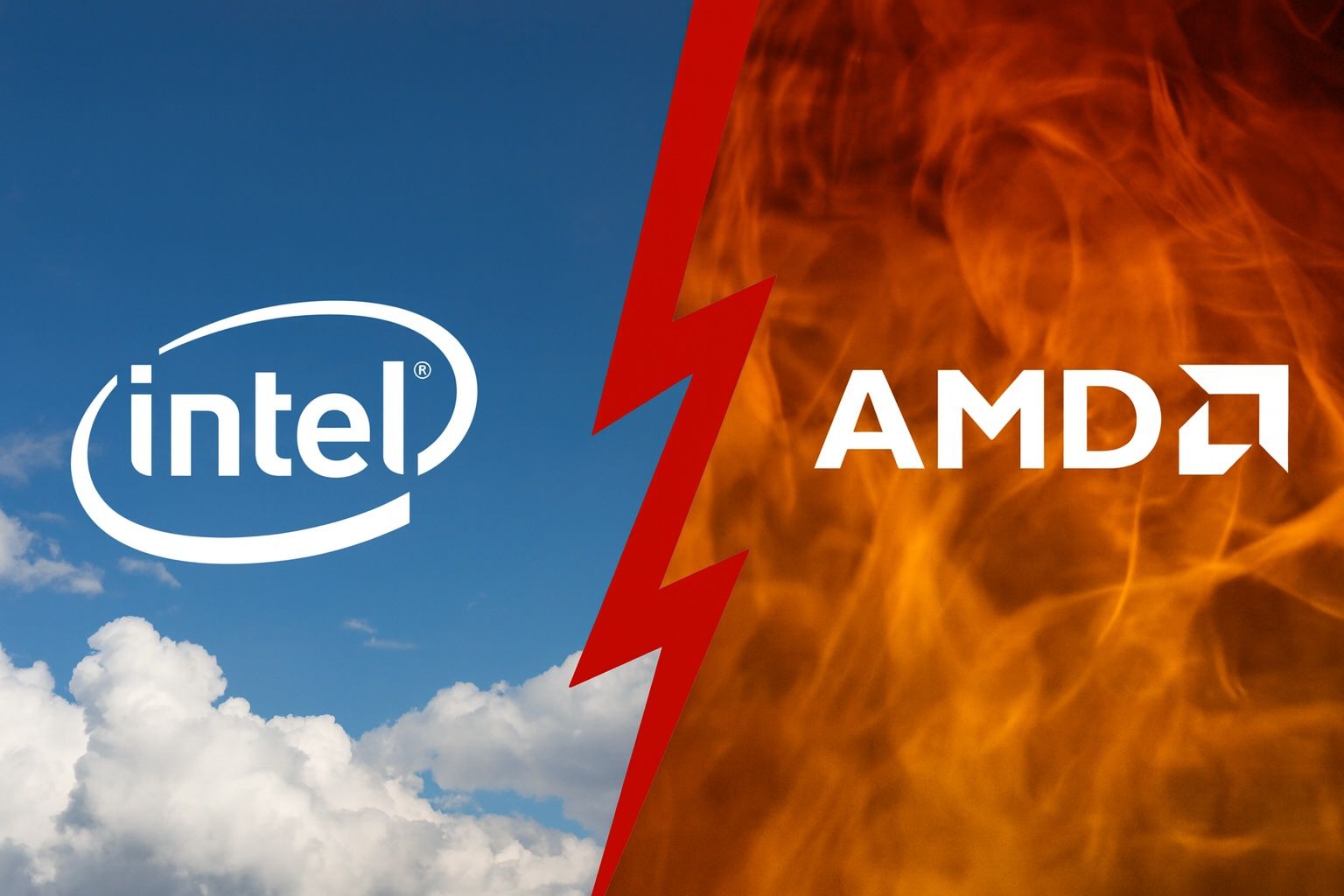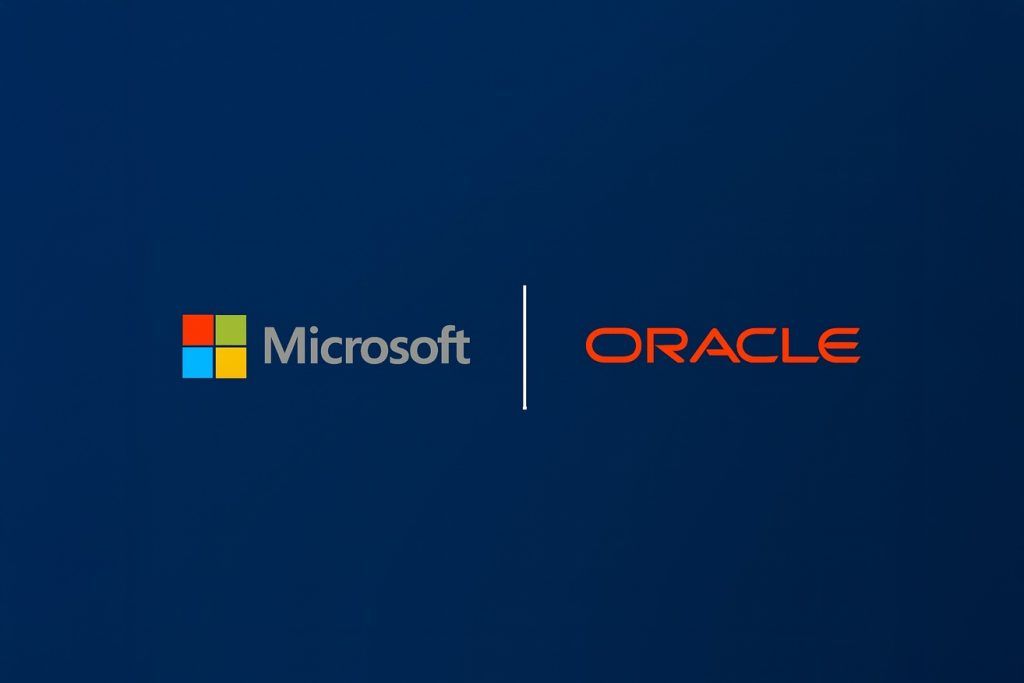AMD (NASDAQ: AMD) and Intel (NASDAQ: INTC) are having very different 2025s. We compare earnings, AI accelerators, PC momentum, China risks, valuations, and near‑term catalysts—through today, November 7, 2025.
Key takeaways
- Prices today (intraday, Nov 7, 2025): AMD ~$233; Intel ~$38. (Data: market prices as of late‑session UTC.)
- 2025 performance: By early November, third‑party trackers show AMD up ~115% YTD (total return) and Intel up ~91% YTD (total return)—different paths, both buoyed by AI narratives. [1]
- Earnings season: AMD posted record Q3 revenue of $9.2B with strong data‑center momentum and raised Q4 guidance. Intel delivered $13.7B in Q3 revenue with client strength, slightly softer Data Center & AI, and guidance that excludes the now‑deconsolidated Altera stake. [2]
- AI accelerators: AMD’s MI350 is ramping, and the OpenAI 6‑gigawatt deal anchors a multi‑year pipeline. Intel broadened Gaudi 3 availability through OEMs and cloud partners and unveiled “Crescent Island” as an inference‑focused data‑center GPU. [3]
- PC market: AMD’s Ryzen AI 300 and Ryzen 9000‑series helped power desktop and client rebounds; Intel’s Lunar Lake underpins 2025 laptops, with Panther Lake (18A) slated to arrive in early 2026. [4]
- Share shifts: Mercury Research data shows AMD gaining desktop share to ~32% in Q2 2025 and steady progress in server, while Intel still leads overall shipments. [5]
- Policy overhang: China tightened procurement rules for foreign AI chips in state‑funded data centers just as AMD received licenses to ship some MI308 parts into the market—illustrating cross‑currents. [6]
AMD vs. Intel in 2025 so far
Earnings and guidance
- AMD: On Nov 4, 2025, AMD reported record Q3 revenue of $9.2B (GAAP gross margin 52%; non‑GAAP 54%), with Data Center revenue at $4.3B, and guided Q4 revenue to $9.3–$9.9B. Management highlighted continued scaling of Instinct accelerators and EPYC CPUs. [7]
- Intel: On Oct 23, 2025, Intel posted $13.7B Q3 revenue. By segment, Client Computing was $8.5B (+5% YoY); Data Center & AI was $4.1B (‑1% YoY); Intel Foundry reported $4.2B (‑2% YoY). Q4 guidance $12.8–$13.8B excludes Altera after Intel sold a majority stake during Q3. [8]
Bottom line: AMD’s prints and guide leaned clearly positive for AI and client, while Intel’s mix showed client strength, steadier server progress, and a cleaner structure post‑Altera.
AI accelerators: where the growth narrative lives
- AMD Instinct roadmap: AMD launched the Instinct MI350 series in 2025, positioning it for major gen‑on‑gen gains in AI compute and rolling out ROCm 7.0 software improvements. Availability targets began in 2H25. [9]
- OpenAI’s 6‑GW commitment: In October, AMD and OpenAI announced a multi‑year, multi‑generation partnership to deploy 6 gigawatts of AMD GPU compute, starting with MI450 in 2H 2026 (initial 1 GW). This is a marquee proof‑point for AMD’s accelerator roadmap and capacity plans. [10]
- Intel Gaudi 3 and beyond: Intel expanded Gaudi 3 availability via the Dell AI Factory ecosystem and IBM Cloud regions, pitching cost/performance advantages for certain inference/training workloads. In late October, Intel also unveiled “Crescent Island,” an inference‑first data‑center GPU with 160GB memory, slated to sample later (longer‑dated but directionally important). [11]
What it means for the stocks: AMD’s OpenAI win gives investors a line‑of‑sight to multi‑year accelerator demand; Intel’s Gaudi 3 and inference‑focused roadmap keep it in the AI conversation while 18A process and future platforms mature.
PCs and “AI PCs”: momentum check
- AMD: CES‑season introductions of Ryzen AI 300 (up to ~50–55 TOPS NPU) seeded 2025 laptop designs, while Ryzen 9000‑series and the Ryzen 7 9800X3D fueled a notable desktop resurgence referenced across Q3 commentary. [12]
- Intel:Lunar Lake powers many 2025 premium Windows laptops; Panther Lake (Core Ultra Series 3) is the first client platform on Intel 18A, with broad availability January 2026 per Intel’s own roadmap brief. [13]
Market share & competitive positioning
Independent tracking from Mercury Research and others shows AMD winning desktop share through mid‑2025 (roughly 32.2% desktop unit share in Q2), while server unit share for AMD hovered in the high‑20s and revenue share climbed on higher‑end SKUs. Intel remains the overall x86 unit leader despite AMD’s gains. [14]
Policy & China watch: a two‑way headwind/tailwind
- Procurement restrictions:Nov 5 reports indicate China banned foreign AI chips in state‑funded data centers, which complicates near‑term demand visibility for U.S. vendors. [15]
- Licensing moves:AMD disclosed licenses to export some MI308 accelerators to China earlier this year and indicated restarts after U.S. review—illustrating how licensing can partially offset procurement bans. Expect volatility by headline. [16]
Investor read‑through: For both stocks, China is a swing factor with headline risk that can whipsaw sentiment independent of fundamentals.
Valuation snapshot (approx., late 2025)
Using widely followed aggregates (which move quickly):
Context matters: AMD’s multiple bakes in a heavy AI accelerator/EPYC growth runway and higher margins; Intel’s reflects cyclical trough earnings, client recovery, and execution risk/opportunity on 18A, Gaudi, and product roadmaps.
Risks and watch items into 2026
- For AMD: MI350/MI450 execution and supply, ROCm ecosystem maturity, competitive responses, and China licensing/policy noise. [19]
- For Intel: Scaling Gaudi deployments, Panther Lake/18A ramps, any further restructuring of Intel Foundry (Intel has flagged scenarios and investor sensitivity around the unit), and server share pressure from AMD. [20]
What changed most in the last few weeks
- AMD’s Q3 beat/guide and segment records (client + data center) re‑anchored the growth narrative into year‑end. [21]
- China headlines turned more restrictive for foreign AI chips in state‑funded data centers even as AMD’s export licensing for MI308 re‑emerged—netting to ongoing uncertainty. [22]
- Intel’s Q3 print showed a firmer client PC base and clearer reporting lines post‑Altera. [23]
AMD vs. Intel: Which looks stronger right now?
Near‑term setup (next 3–6 months):
- AMD: Stronger top‑line momentum, clearer accelerator demand visibility (OpenAI deal), and continued EPYC wins keep the operating picture constructive—though execution and policy risks remain. [24]
- Intel: Client PC traction is real; AI efforts are broadening (Gaudi 3, inference GPU), and strategic simplification after the Altera sale may help focus. The crux is translating roadmaps (18A, Panther Lake; Clearwater Forest/Xeon 6+) into sustained margin and share improvements. [25]
Medium‑term (2026+): AMD’s accelerator cadence (MI450 timing) and software stack depth vs. Intel’s 18A‑era CPUs/GPUs and Gaudi footprint will likely drive relative re‑rating. For now, the growth premium sits with AMD, while Intel’s case leans on turnaround and value.
2025 news timeline (high‑impact items)
- Nov 4, 2025 – AMD Q3 FY25: Record $9.2B revenue; Data Center $4.3B; Q4 guide $9.3–$9.9B. [26]
- Oct 23, 2025 – Intel Q3 FY25: $13.7B revenue; CCG $8.5B (+5% YoY); DCAI $4.1B (‑1% YoY); guidance excludes majority‑sold Altera. [27]
- Oct 2025 – AMD & OpenAI: Multi‑year 6‑GW GPU deal; first 1 GW of MI450 in 2H 2026. [28]
- May–Oct 2025 – Intel AI:Gaudi 3 expands via Dell/IBM Cloud; Intel unveils Crescent Island inference GPU. [29]
- Q2 2025 – Share shifts: AMD desktop unit share ~32.2%; server unit share ~27%. [30]
- Nov 5, 2025 – China policy: Reports of ban on foreign AI chips in state‑funded data centers. [31]
Valuation vs. performance: the scoreboard
- YTD total return (incl. dividends, where applicable):
- Forward P/E (late 2025 snapshots):
Interpretation: AMD’s premium reflects higher near‑term growth visibility in accelerators and EPYC; Intel’s multiple rides on cyclical trough EPS plus expectations for process/portfolio inflection.
Investment framing (not financial advice)
- Bullish AMD case: Clearer AI accelerator demand (OpenAI anchor), EPYC momentum, and improving client mix. Watch MI350/MI450 execution and ROCm traction. [36]
- Bullish Intel case: Client recovery, Gaudi 3 expansion, and a tighter portfolio post‑Altera; upside if 18A platforms (Panther Lake; Clearwater Forest/Xeon 6+) hit timelines and yields. [37]
- Key risks to both: Export controls and China procurement shifts, supply chain/power constraints for AI buildouts, and competitive pressure from Nvidia and custom silicon. [38]
Sources & further reading
- AMD Q3 FY25 earnings release and details. [39]
- Intel Q3 FY25 earnings release and segment data. [40]
- AMD Instinct MI350 launch & ROCm 7.0. [41]
- AMD–OpenAI 6‑GW partnership (AMD; OpenAI). [42]
- Intel Gaudi 3 availability (Intel; IBM Cloud). [43]
- Inference GPU “Crescent Island.” [44]
- PC/AI PC roadmaps: Intel Panther Lake timing. [45]
- Market share (Q2 2025): AMD gains (Mercury Research via Tom’s/Heise); server revenue share trends. [46]
- Policy: China bans foreign AI chips in state‑funded data centers. [47]
- China licensing: AMD MI308 export restart indications. [48]
- Valuation snapshots: Yahoo Finance key stats for AMD/INTC. [49]
- YTD total returns (as dated): FinanceCharts for AMD/INTC. [50]
Disclosure: This article is for information and news analysis only and is not investment advice. Do your own research and consider your objectives and risk tolerance before making investment decisions. Prices cited are intraday as of Nov 7, 2025 and can change rapidly.
References
1. www.financecharts.com, 2. ir.amd.com, 3. www.amd.com, 4. www.amd.com, 5. www.tomshardware.com, 6. www.reuters.com, 7. ir.amd.com, 8. www.intc.com, 9. www.amd.com, 10. www.amd.com, 11. newsroom.intel.com, 12. www.amd.com, 13. newsroom.intel.com, 14. www.tomshardware.com, 15. www.reuters.com, 16. www.bloomberg.com, 17. finance.yahoo.com, 18. finance.yahoo.com, 19. www.amd.com, 20. www.intc.com, 21. ir.amd.com, 22. www.reuters.com, 23. www.intc.com, 24. ir.amd.com, 25. www.intc.com, 26. ir.amd.com, 27. www.intc.com, 28. www.amd.com, 29. newsroom.intel.com, 30. www.tomshardware.com, 31. www.reuters.com, 32. www.financecharts.com, 33. www.financecharts.com, 34. finance.yahoo.com, 35. finance.yahoo.com, 36. www.amd.com, 37. www.intc.com, 38. www.reuters.com, 39. ir.amd.com, 40. www.intc.com, 41. www.amd.com, 42. www.amd.com, 43. newsroom.intel.com, 44. www.tomshardware.com, 45. newsroom.intel.com, 46. www.tomshardware.com, 47. www.reuters.com, 48. www.bloomberg.com, 49. finance.yahoo.com, 50. www.financecharts.com







